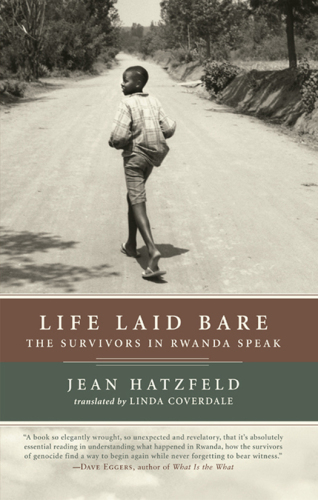
Life Laid Bare
The Survivors in Rwanda Speak
کتاب های مرتبط
- اطلاعات
- نقد و بررسی
- دیدگاه کاربران
نقد و بررسی

August 20, 2007
French journalist and war correspondent Hatzfeld offers brief, pithy accounts of 14 survivors of the three-day Rwandan genocide of 1994, in which 10,000 Tutsis seeking refuge in churches were slaughtered by machete-wielding Hutus. The survivors describe both devastation, as “neighbors with whom used to chat” became executioners, and the degradation of later being marginalized by Rwandan society. Announcing their presence with “whistles and songs,” the Hutu killers arrived regularly in the morning and left in the late afternoon, their violent sprees corresponding with victims' efforts to “hide the children in small groups under the papyrus” at sunrise, and to emerge from hiding places in the marsh “when the killers had finished their work” at sunset. Even though each account tells the same harrowing story, each voice is unique. Bringing cumulative power to what, in lesser hands, might have been a random collection of historical accounts, Hatzfeld's wrenching collection compels an active response to the genocides occurring today.

September 1, 2007
People not streaming with their own blood were streaming with the blood of others. In Machete Season: The Killers in Rwanda Speak (2005), French journalist Hatzfeld interviewed the perpetrators of the 1994 genocide that killed several hundred thousand Tutsis. Now he returns to speak to 14 survivors, who remember the horrifying atrocity they witnessed, from a 12-year-old schoolboy (who hid in a mound of corpses) to a 60-year-old teacher (who remembers his well-educated neighbors with their machetes). More than a random collection of oral histories, the focus is on one district, an area of 154 square miles, where in a period of six weeks, about 50,000 Tutsisfive out of sixwere murdered by their Hutu neighbors. For each of the 14 interviewed today, Hatfeld fills in the background and provides a black-and-white photo. Those photos, accompanied by the clear personal voices, break your heart. The daily struggle with survivor guilt and outsiders indifference is part of a constant connection with the Holocaust.(Reprinted with permission of Booklist, copyright 2007, American Library Association.)

























دیدگاه کاربران